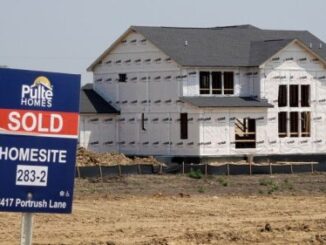
The first quarter of 2023 proved a tough market for everyone in the housing industry, including institutional buyers of single-family rental (SFR) properties, but there are signs the second quarter of this year has been far more buoyant for these so-called “Wall Street” players.
One clue to that resurgence is a $1.5 billion deal inked recently by Pretium Partners to acquire more than 4,000 single-family homes from homebuilder D.R. Horton. Pretium owns the SFR platform Progress Residential, which controlled a portfolio of some 87,000 SFR homes as of yearend 2022.
The Wall Street Journal reported the D.R. Horton homes were built as rentals and are located in the Southeast and Southwest — red-hot investment regions for the institutional SFR market.
On another front, Zelman & Associates, per news reports, estimates that institutional investors as of yearend 2022 had dedicated some $110 billion to acquire or build SFR homes, a sign there is still plenty of money available for dealmaking ahead.
Brandon Lwowski, director of research at proptech firm HouseCanary, said the slowdown in SFR home purchases by large investors started to show up in the third quarter of last year and escalated from there — into the first quarter of 2023.
“But If you look at the public record data that’s coming out nationwide, we’re starting to see activity pick up again from the large investors,” Lwowski said. He added that the uptick in institutional SFR purchases started late in the first quarter of this year and has continued in the second quarter.
This uptick is a sign that more housing inventory is available for sale as more potential homebuyers are priced out of the market due to high interest rates and soaring housing prices.
“It’s been extremely expensive and unaffordable for a lot of families to purchase a home, so they’re going to have to find alternative housing through the rental side,” Lwowski said. “Homebuyers have been sitting on the sidelines.”
Kurt Carlton, co-founder and president of New Western, a private real estate investment marketplace serving some 165,000 investors, said institutional SFR investors that own thousands of properties — such as Progress Residential, FirstKey Homes, Tricon Residential, Invitation Homes and more — collectively pulled back from home purchases starting last year, with acquisitions “down 80% in the fourth quarter of 2022 from the fourth quarter of 2021.”
That trend continued into the first quarter of this year, he added, “with mom-and-pop investors — the independent real estate investors or individuals that own fewer than 50 properties — representing 82% of the transactions in Q1 [2023] for the entire market.”
L.D. Salmanson, CEO of Cherre, a data-integration and insights platform serving major players in the real estate market, including SFR operators, said the slowdown in SFR purchase activity by institutional players was not due to rental rates, which have remained strong, “but rather, it’s that there are a lot less people selling [homes].”
Temporary SFR slowdown
Institutional investors nationwide accounted for 5.4%, or one of every 19 single-family home and condo purchases in the first quarter of 2023, a recent report by real estate data firm ATTOM shows. That was down from 6.6% in the fourth quarter of 2022 and from 6.1% in the first quarter of 2022.
Among states with the largest percentages of single-family home sales to institutional investors in the first quarter of 2023 were Georgia (8.4% of all sales), Tennessee (7.7%), Alabama (7.5%), Texas (7.5%) and Arizona (7.3%).
“That’s temporary,” Salmonson said of the slowdown in institutional SFR purchases. “That’s not going to last.”
He added that the large SFR players typically target homes with prices up to $500,000, with the $300,000 range being the sweet spot.
In fact, according to Lwowski, an expansion of the volume of homes available for sale appears to already be unfolding, with some parts of the country experiencing “excess inventory right now,” including in regions that have traditionally been strong markets for institutional SFR investment — the Southeast and Southwest.
“It might sound crazy, but there’s a lot of areas in Texas, Florida and the Carolinas where we’re seeing this increase in [homes for-sale] inventory,” he said. “One market that was surprising to me when I was looking at this data was the Austin/Round Rock [Texas] area, which has the largest year-over-year increase in inventory.”
Even in San Antonio, which is just south of Austin and where homes are more moderately priced, Lwowski said home inventory is up 53% year over year.
Housing-market data firm Altos Research also shows housing inventory up nationwide in recent months — from slightly more than 405,000 units in mid-April to 443,000 units as of June 9. The median rental rate on single-family homes has risen from $2,275 to $2,445 over the same period, according to Altos.
Despite the uptick in home inventory, Altos’ data shows the median list price for a home has risen from $405,000 at yearend 2022 to just shy of $455,000 as of June 9 of this year. In addition, the volatile interest-rate environment unleashed by the Federal Reserve’s campaign to suppress inflation seems to have settled down some over the past several months, with 30-year fixed mortgage rates hovering in the 6% to 7% range since February of this year, according to Optimal Blue.
A recent report by fix-and-flip lender Kiavi points out that most SFRs are owned by investors with 10 or fewer rental homes, with institutional investors controlling only about 3% of the market — and up to 5%, according to some market observers. “These [institutional] firms are quickly making inroads in the sector,” the Kiavi report adds. “They also possess an enormous war chest of funding that they will bring to bear as rates level off and if home prices start to fall.”
The volatile housing market also has affected the fix-and-flip market — in which investors purchase homes, upgrade them and then seek to resell them for a profit. Arvind Mohan, CEO of Kiavi, which has originated some $12.3 billion in loans over the past nine years, said more of his customers are willing to hold single-family properties they have purchased and renovated for sale and instead put them on the rental market “because rental rates have risen.”
“They’re able to at least realize ongoing positive cash flows and not have the need to liquidate these properties,” Mohan explained. “Given the fact that they’re not doing as many flips today, they’re going to be OK with sitting on properties for longer and collecting the rent.”
A big gulp
Nationwide, there are an estimated 17 million to 18 million SFR homes, up from about 15 million just a few years ago, “so that’s 20% growth in about three to four years,” said Cherre’s Salmanson.
“And we’re expecting another 13 million or so [SFR homes to be added to that total] by the end of the decade,” he added. “[The SFR market is] about a $4.5 trillion to $5 trillion addressable market … and 18% of the market is build-for-rent.”
Fred Matera, chief investment officer at Redwood Trust, a real estate investment trust focused on the residential market, said as institutional SFR activity waned in recent quarters, it has been individual investors — the mom-and-pop SFR owners — who have “picked up the slack.”
In fact, according to a tally of non-QM securitization deals tracked by Kroll Bond Rating Agency, about a dozen private-label offerings since April have been backed, in part, by investment properties underwritten using debt-service coverage ratios —a financing method commonly used by mom-and-pop SFR owners. The percentage of DSCR loans in the mortgage pools backing those offerings ranged from 18% to 57%.
Matera adds that the nation overall is “structurally undersupplied” on the housing front by anywhere from 3.5 million to 7 million housing units — both single-family and multifamily, “depending on your view of housing starts and household formation.” That, along with a growing population in need of housing, coupled with high interest rates and home prices, is fueling a housing-affordability crisis in the nation.
“We really think that the single-family rental market is very important to address the [housing] affordability issue because it is still cheaper to rent than purchase,” Matera said. “When we talk about the single-family rental market, we’re talking about those mom and pops — the small operators — as well as the institutions.”
He added that the rise of the SFR market “is a legacy of the great financial crisis, followed by this difficult housing-affordability crisis” we now face.
“I think it’s changed the way young people and young households look at owning a home versus renting.” Matera said. “I think renting is an equally acceptable way to live now.”



